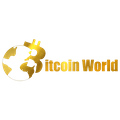EUR/USD Forecast: ING Unveils Crucial Consolidation Range
0
0
BitcoinWorld

EUR/USD Forecast: ING Unveils Crucial Consolidation Range
While the spotlight often shines brightly on the dynamic world of cryptocurrencies, understanding the underlying currents of traditional financial markets, especially the forex arena, is absolutely crucial. The stability, or indeed volatility, of major currency pairs like EUR/USD can send ripples across global asset classes, including digital assets. A stable traditional financial landscape often fosters a more confident environment for risk assets like crypto, while uncertainty can lead to broader market corrections.
This week, a significant forecast from ING, one of Europe’s leading financial institutions, has captured the attention of market participants. ING predicts that the widely watched EUR/USD currency pair is poised for a period of consolidation, specifically within a tight range of 1.1700 to 1.1830. This projection suggests a temporary pause in significant directional moves, inviting traders and investors to reassess their strategies in light of the prevailing macroeconomic environment.
Understanding the EUR/USD Forecast: ING’s Perspective
For many, the EUR/USD forecast provided by ING offers a clear roadmap for the week ahead. Consolidation, in simple terms, suggests that the currency pair is expected to trade sideways, without a significant directional bias. This isn’t a prediction of stagnation, but rather a period where buying and selling pressures are largely balanced, leading to price action confined within established support and resistance levels.
ING’s analysis likely stems from a careful evaluation of several factors:
- Lack of Major Catalysts: The upcoming economic calendar for both the Eurozone and the United States appears relatively light on ‘game-changing’ data releases or central bank speeches that could significantly alter market expectations. Without fresh, impactful news, existing trends tend to mature into periods of consolidation.
- Balanced Economic Outlooks: While both regions face their unique challenges, the immediate economic outlooks for the Eurozone and the US seem to be in a temporary equilibrium. Neither economy is showing overwhelming signs of rapid expansion or severe contraction that would dramatically shift the monetary policy expectations of their respective central banks.
- Technical Levels: The specified range of 1.1700-1.1830 often represents key technical support and resistance levels that have historically held firm or attracted significant trading interest. Traders often respect these levels, leading to price bounces within the defined boundaries.
This period of consolidation can be seen as the market taking a breath, digesting previous movements, and awaiting the next significant piece of information to dictate its direction. For traders, understanding this forecast is key to adapting their approach from trending strategies to range-bound ones.
Navigating the Forex Market Analysis: What Drives Consolidation?
A thorough forex market analysis reveals several underlying currents contributing to ING’s consolidation prediction. The dynamics of the EUR/USD pair are a complex interplay of interest rate differentials, economic growth prospects, geopolitical stability, and market sentiment. When these factors largely cancel each other out, consolidation often ensues.
Consider the following elements that contribute to a range-bound environment:
- Central Bank Stance: Both the European Central Bank (ECB) and the Federal Reserve (Fed) have recently adopted cautious stances. While the Fed has begun discussions around tapering its asset purchases, it has been careful not to signal immediate rate hikes. Similarly, the ECB remains dovish, emphasizing its commitment to supportive monetary policy for longer. This synchronized caution reduces the impetus for significant currency divergence based on monetary policy expectations.
- Inflation Debates: The debate around whether current inflation spikes are “transitory” or more persistent is ongoing in both regions. Until a clearer consensus emerges, central banks are unlikely to make drastic moves that would create strong directional biases for their currencies.
- Global Risk Sentiment: If global equity markets are trading sideways or with mixed sentiment, it can lead to reduced safe-haven flows into the USD or risk-on flows into the EUR. A neutral global risk appetite often translates into range-bound trading for major currency pairs.
This nuanced environment requires a diligent approach to forex market analysis, moving beyond simple directional bets to a more sophisticated understanding of market equilibrium.
Key Factors Influencing Currency Trading Outlook
When assessing the broader currency trading outlook, several key factors come into play that support ING’s view of consolidation. These factors collectively create a balanced environment where neither the Euro nor the US Dollar has a decisive advantage, at least for the short term.
Let’s delve into these influences:
- Economic Data Releases: While the calendar is light on ‘tier-one’ data, smaller releases such as manufacturing PMIs, consumer confidence indices, and unemployment claims will still be monitored. If these data points broadly align with expectations in both regions, they will reinforce the consolidation narrative. Unexpected deviations, however, could challenge the predicted range.
- Interest Rate Differentials: The yield gap between US Treasuries and German Bunds (a proxy for Eurozone bonds) is a critical driver. Currently, this gap is not widening dramatically in either direction. Until there’s a clear shift in expectations for future rate hikes or cuts from either the Fed or the ECB, this differential will likely contribute to range-bound trading.
- Geopolitical Developments: Any unforeseen geopolitical events, while not currently prominent, have the potential to disrupt even the most confident forecasts. However, in the absence of such shocks, the focus remains on economic fundamentals and central bank guidance.
- Technical Indicators: Beyond the 1.1700-1.1830 range, other technical indicators like moving averages, Bollinger Bands, and oscillators might also be signaling a period of reduced volatility and sideways movement, reinforcing the technical arguments for consolidation.
Understanding these contributing factors is essential for anyone looking to navigate the short-term currency trading outlook, enabling them to anticipate potential deviations from the predicted range.
Deciphering the ING EUR USD Range: Strategies for Traders
For those actively involved in the markets, understanding the specifics of the ING EUR USD range is paramount. A 130-pip range might seem modest, but it presents distinct opportunities for specific trading strategies. This isn’t a market for aggressive trend-following, but rather for meticulous range-bound tactics.
Here are some actionable insights for traders operating within this predicted range:
- Range Trading: The most straightforward strategy involves buying near the lower bound (1.1700) and selling near the upper bound (1.1830). Traders would look for clear signs of support at the bottom and resistance at the top before initiating positions.
- Scalping: For high-frequency traders, the tight range offers opportunities for scalping, profiting from small price movements within the range. This requires quick execution and tight risk management.
- Options Strategies: Traders using options might consider strategies that profit from low volatility, such as selling straddles or strangles, betting that the price will remain within a certain range.
- Risk Management: In any market, but especially in a consolidating one, strict risk management is crucial. Setting clear stop-loss orders just outside the predicted range (e.g., below 1.1700 or above 1.1830) is vital to protect against unexpected breakouts.
- Monitoring for Breakouts: While consolidation is expected, markets can always surprise. Traders should remain vigilant for any significant fundamental news or technical break of the 1.1700 or 1.1830 levels, which would signal a potential new directional trend.
The key takeaway is to adjust one’s trading methodology to suit the predicted market behavior. The ING EUR USD forecast provides a framework, but successful execution depends on disciplined application of appropriate strategies.
The Broader Implications of USD Strength
The stability predicted for EUR/USD also has broader implications, particularly concerning the overall perception of USD strength. The Euro constitutes a significant portion of the Dollar Index (DXY), meaning a stable EUR/USD often translates to a relatively stable DXY. This stability in the world’s reserve currency can have ripple effects across various asset classes, including commodities and even cryptocurrencies.
Here’s how a contained EUR/USD impacts the wider financial ecosystem:
- Commodities: Many global commodities, like oil and gold, are priced in US Dollars. A stable USD generally means less volatility driven by currency fluctuations for these assets. If the dollar isn’t weakening significantly, it might reduce the upward pressure on commodity prices that would otherwise be seen as a hedge against dollar depreciation.
- Emerging Markets: A stable dollar can alleviate pressure on emerging market currencies, many of which are heavily indebted in USD. This can provide a more stable environment for their economies and reduce the risk of capital flight.
- Cryptocurrency Market: While cryptocurrencies often march to their own drum, they are not entirely decoupled from traditional finance. A stable USD, and by extension a stable forex market, can contribute to a broader sense of market calm. In times of extreme dollar strength or weakness, investors sometimes seek alternatives, but a period of relative calm in forex might mean less immediate pressure on Bitcoin or other digital assets to act purely as a hedge or a risk-off asset. It allows crypto’s own fundamentals to play a larger role.
- Corporate Earnings: For multinational corporations, particularly those with significant international operations, a stable EUR/USD reduces currency translation risk, providing more predictability for their earnings reports.
Ultimately, a period of sustained stability in the EUR/USD, as predicted by ING, contributes to a more predictable global financial environment, which can indirectly foster confidence across various investment sectors, including the burgeoning digital asset space. The absence of extreme USD strength or weakness allows other market narratives to come to the forefront.
Conclusion: Navigating Calm Waters with Insight
In conclusion, ING’s forecast for EUR/USD to consolidate within the 1.1700-1.1830 range this week provides a crucial anchor for market expectations. While the forex market might appear calm on the surface, beneath it, various economic indicators and central bank sentiments continue to exert their subtle influence, creating this period of equilibrium. For traders and investors, this isn’t a signal to disengage, but rather an invitation to refine strategies, focus on meticulous risk management, and remain vigilant for any shifts that could trigger a breakout.
Understanding these expert analyses from institutions like ING is paramount for anyone navigating the complexities of global finance, including those whose primary interest lies in the volatile yet promising world of cryptocurrencies. The interconnectedness of financial markets means that insights from one domain often provide valuable context for another, helping investors make more informed decisions.
To learn more about the latest Forex market trends, explore our article on key developments shaping the US Dollar and Euro liquidity.
This post EUR/USD Forecast: ING Unveils Crucial Consolidation Range first appeared on BitcoinWorld and is written by Editorial Team
0
0
 Manage all your crypto, NFT and DeFi from one place
Manage all your crypto, NFT and DeFi from one placeSecurely connect the portfolio you’re using to start.





